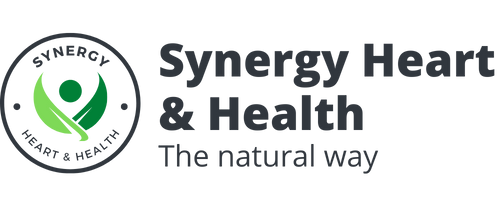Migraine vs Tension Headache: What’s the difference?
Migraine vs tension headaches are two common types of headaches that many people experience. While they can both cause discomfort and affect daily life, it’s important to understand the differences between them in order to seek appropriate treatment and relief. In this article, we will explore the distinctive characteristics of migraine and tension headaches, including their causes, symptoms, and available treatment options. By gaining a better understanding of these conditions, you can make informed decisions about managing your headaches and improving your overall well-being.
Headaches are a common ailment that affects millions of people worldwide. While headaches can generally be classified as either migraine or tension headaches, it can be difficult to distinguish between the two. In this blog post, we will explore the differences between migraines and tension headaches, including their symptoms, triggers, and treatment options.

What is a Migraine Headache?
Migraine headaches are characterized by intense, throbbing pain on one or both sides of the head. They often come with other symptoms such as nausea, vomiting, and sensitivity to light and sound. Migraines can last from a few hours to several days and can be debilitating. They are often triggered by stress, changes in hormones, certain foods, and environmental factors such as changes in weather.
-
Moderate to severe pain (often throbbing pain) that may be more painful on one side of your head.
-
The more physical active you are, the worse the pain gets. Thus it usually helps if you lie down.
-
Most people experience pain around their eyes or temples while suffering from a migraine.
-
You’re sensitive to light and sound. It helps to be in a quiet and dark room.
-
Nausea and vomiting while having a migraine are the worst, yet it’s one of the symptoms of a migraine.
-
You might even be experiencing an aura, where you’ll see lights, dots or flashes.
-
Some people noted that they will experience pins and needles just before the migraine headaches starts.
What is a Tension Headache?
Tension headaches, on the other hand, are characterized by a dull, aching pain that is felt on both sides of the head. The pain is often described as a tight band around the head or a heavy weight on the shoulders. Tension headaches are often caused by muscle tension in the head and neck, which can be brought on by stress, poor posture, or other physical factors.
-
You might experience pain on both sides of your head.
-
Although you have a headache, it’s not severe.
-
You might have a feeling of pressure in your head, instead of throbbing.
-
Most of the time you will also have tight neck and/or shoulder muscles.
How can you identify the difference
To identify the difference between migraines and tension headaches, it is important to pay attention to the symptoms and triggers. If you experience intense, throbbing pain on one or both sides of the head, along with other symptoms such as nausea and sensitivity to light and sound, it is likely that you are experiencing a migraine. If you experience a dull, aching pain that is felt on both sides of the head, and is often described as a tight band around the head or a heavy weight on the shoulders, it is likely that you are experiencing a tension headache.
What are the treatment options for migraines and tension headaches?
Treatment options for migraines and tension headaches vary depending on the type and severity of the headache. Over-the-counter pain relievers such as ibuprofen and acetaminophen can be used to relieve mild to moderate migraines and tension headaches. For more severe migraines, prescription medications such as triptans may be necessary. Preventative treatments may also be prescribed to help reduce the frequency and severity of migraines and tension headaches, such as beta-blockers, anti-seizure medications, and antidepressants.
Headache & Migraine Defense by Root Logic
Research-backed natural formula, designed to proactively fight the root causes of headache and migraine onset—namely inflammation, stress, blood stasis, and muscle tension. Rather than only taking an OTC drug in response to pain, try to get ahead of experiencing the pain altogether. Click on the link to find out more about the headache & migraine defense by Root Logic.
CEFALY drug free migraine treatment
Cefaly is a device that is used as a non-invasive treatment option for migraines. It is a small, battery-operated device that is worn on the forehead and is designed to prevent migraines before they occur. The device is worn for 20 minutes per day and works by applying a small electrical current to the forehead, which is thought to stimulate certain nerves and reduce the frequency and severity of migraines.
Cefaly is a transcutaneous electrical nerve stimulation (TENS) device, which means it uses electrical current to stimulate the nerves and muscles. It’s been approved by FDA and Health Canada for the preventative treatment of migraine headaches in adults. It’s been shown to be effective in reducing the number of migraine attacks, as well as the intensity and duration of migraines when they do occur.
It’s considered a safe alternative for people who do not want to take medication or who have not found relief with medication. It is important to note that Cefaly is not a cure for migraines and should be used in conjunction with other treatment options such as medications, lifestyle changes, and alternative therapies. Before using Cefaly, it is important to consult with a healthcare provider to determine if it is the right treatment option for you.
No pain energy cell from Vital Field
Vital Field is a product that is marketed as a way to support a less pain-filled life through natural and safe means. This technology is based on over 30 years of research and development, and that it has been used in cooperation with over 2,800 clinics in Germany, Switzerland, and Austria.
Garlic may be a natural remedy for migraine headaches
Some studies have suggested that garlic may have potential as a natural remedy for migraine headaches. Garlic is a natural anti-inflammatory and antioxidant, and it has been found to have blood-thinning properties, which may help to reduce the frequency and severity of migraines.
One study found that a daily dose of garlic powder supplements reduced the frequency of migraines in people who suffered from migraines with aura. Another study found that a combination of garlic and ginger reduced the frequency and intensity of migraines in people who suffered from migraines with aura.
It’s important to note that more research is needed to confirm the effectiveness of garlic as a treatment for migraines, and it should not be used as a substitute for conventional medical treatment. It’s also important to note that garlic can interact with certain medications, so it is important to speak with your healthcare provider before using garlic supplements if you are taking any medications.
Additionally, eating fresh garlic in moderate amounts as a part of a healthy diet may also provide some benefits, however, consuming large amounts of garlic may cause stomach upset and other side effects.
In conclusion, garlic may have potential as a natural remedy for migraine headaches, but more research is needed to confirm its effectiveness. If you are considering using garlic as a treatment for migraines, it is important to speak with your healthcare provider first.
Can lifestyle changes help?
Treatment options for migraines and tension headaches vary depending on the type and severity of the headache. Over-the-counter pain relievers such as ibuprofen and acetaminophen can be used to relieve mild to moderate migraines and tension headaches. For more severe migraines, prescription medications such as triptans may be necessary. Preventative treatments may also be prescribed to help reduce the frequency and severity of migraines and tension headaches, such as beta-blockers, anti-seizure medications, and antidepressants.
In Conclusion
In conclusion, migraines and tension headaches are two different types of headaches that have distinct symptoms and triggers. By understanding the difference between the two and identifying your triggers, you can effectively manage and prevent headaches. If you are experiencing chronic headaches, it is important to consult with your healthcare provider to determine the best course of treatment for you.
Related Articles
Juliana has been suffering from migraines for 28 years




